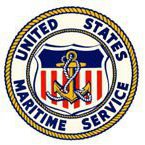-
Posts
2,242 -
Joined
-
Last visited
-
Days Won
11

Kiipu replied to Kiipu's topic in Military Swords of Japan

Kiipu posted a topic in Military Swords of Japan

Kiipu replied to george trotter's topic in Military Swords of Japan

Kiipu replied to george trotter's topic in Military Swords of Japan

Kiipu replied to george trotter's topic in Military Swords of Japan

Kiipu replied to george trotter's topic in Military Swords of Japan

Kiipu replied to IJASWORDS's topic in General Nihonto Related Discussion

Kiipu replied to george trotter's topic in Military Swords of Japan

Kiipu replied to george trotter's topic in Military Swords of Japan

Kiipu replied to tokashikibob's topic in Auctions and Online Sales or Sellers

Kiipu replied to Bruce Pennington's topic in Military Swords of Japan

Kiipu replied to Bruce Pennington's topic in Military Swords of Japan

